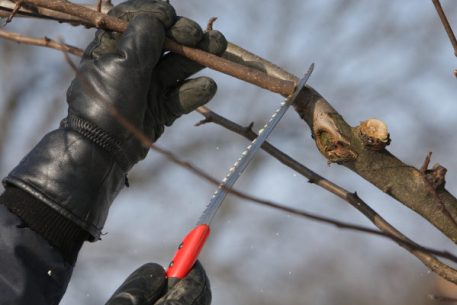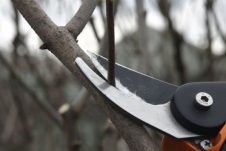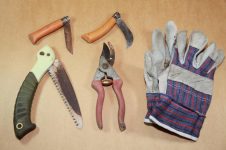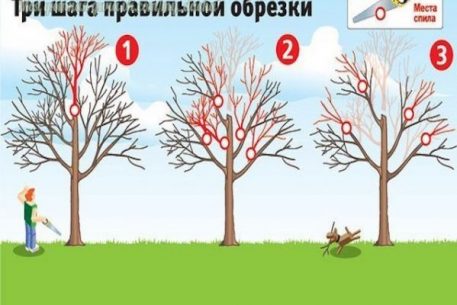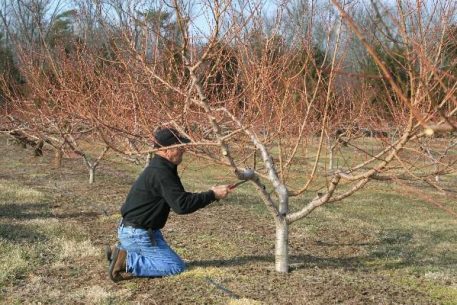In order to reduce unnecessary overgrowth, only the most necessary pear pruning is carried out in the fall. The tree responds very strongly to this procedure, intensively growing young shoots next year.
Material Content:
The need for pear pruning in the fall
For a tree, there is no difference between pruning in the fall and early spring until the buds awake. This is one and the same state of the tree when one vegetation has ended and the second has not yet begun. It is more convenient to carry out pruning in the fall, there are no snowdrifts of snow and spring slush underfoot, hands do not freeze.
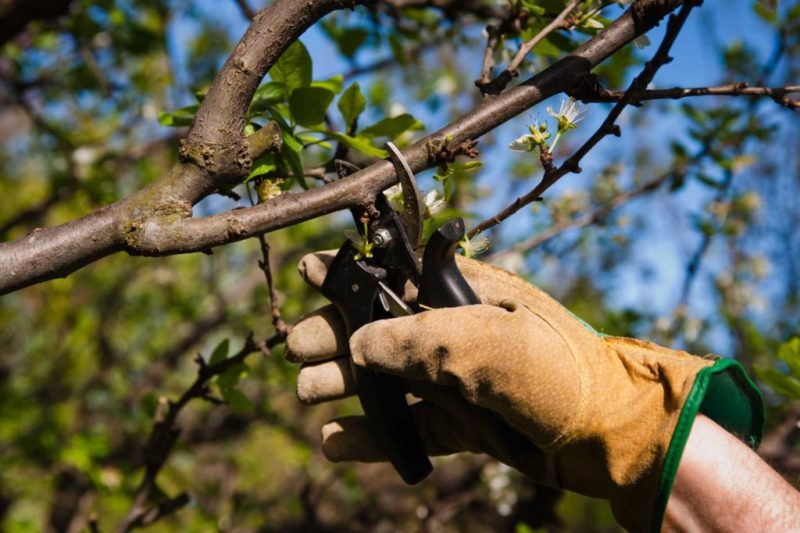
An unpleasant feature of autumn pruning of trees is that it reduces winter hardiness, therefore it is not applicable for low-winter species. In autumn, it is ideal to trim an adult pear.
Corrective pruning is carried out in September, when the leaves fall.
Some gardeners believe that early spring pruning is safer in terms of infecting plants with a milky sheen. But this disease is quite rare.
Event Tools
Thick branches are cut with a saw, thin pruners. So that when cutting, the thick side branch does not fall off and does not tear off the bark, it is removed in two approaches. First, cut off most of it, leaving a stump at the trunk, then saw off the rest of it at the very base. A saw or hacksaw injures branches less than a pruner.
During thinning of the crown, the secateurs need to be kept with the crescent part on top, otherwise cutting to the ring will not work.
A sharp knife can also be used to cut shoots. All tools must be sanitized before work.
Autumn pruning dates
Autumn pruning time depends on the region of residence.In the southern regions of Russia, it can be carried out on warm October days.
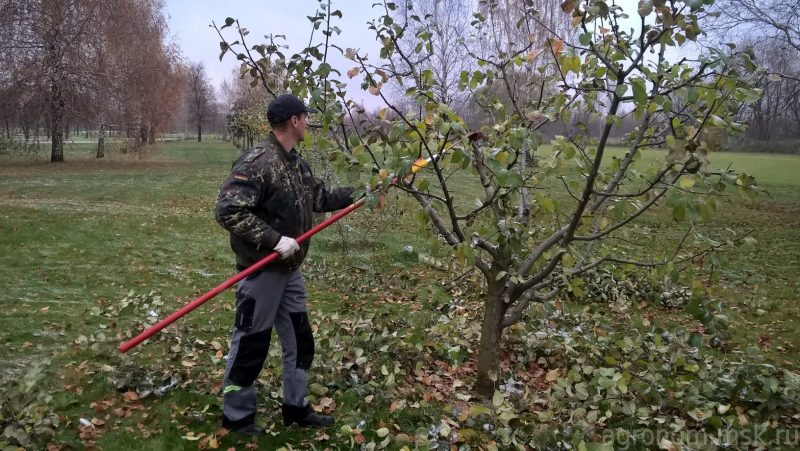
It is not advisable to trim at temperatures below 0 ° C. When wood becomes brittle, it cannot be cut. Recommended pruning time after leaf fall when the movement of plant juices slows down.
So that the tree has time to prepare for the onset of cold weather, in central Russia it is advisable to finish pruning by October. It is best to choose a sunny, fine day when it is pleasant to work.
Scheme for beginners
The process usually begins from above. If you cut the lower branches, then the growth of the tree will go up. Before proceeding, it is necessary to imagine how the tree will look, for example, as a bowl or with a sparse-tier crown.
Pear pruning is done in the same way as an apple tree. There are a lot of types of crown formation:
- longline;
- sparse-tier;
- pyramidal;
- spindle-shaped;
- cup-shaped.
The tiered type of formation is popular. Sparse-tier pruning is applicable to apple trees and pears with a ring-fruit type of fruiting.
Sample cropping scheme:
- When trimming, no more than 1/3 of the crown is removed. Ideally, you can make the crown low wide and flat round. The principle of subordination of branches must be observed. If a sparse-tier crown is formed, the central conductor is left, all other branches are made below it.
- Do not lay more branches in the upper tier than in the lower tier. If 5 branches grow at the bottom, 4 branches are left at the top, etc. Ideally, they should fill the space between the branches of the previous tier.
- When the tree has reached the desired height, very shortly cut the central conductor, for 2-3 buds. The next year, the tree will grow very little in height. It again needs to be shortened by 2 buds, and the height of the tree will remain the same.
In order for the tree to retain its shape, size, and regularly bear fruit, pruning of branches should be carried out every year.
The nuances of pruning a young, old tree
Pruning of young pears in the fall is necessary so that all branches are well lit by the sun and ventilated. Therefore, it is necessary to remove unnecessary, interfering branches, those that intersect with each other.
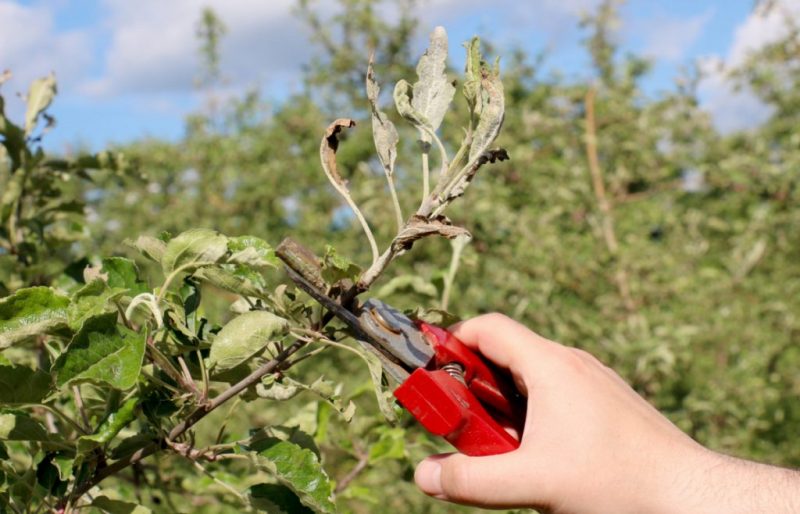
Proper pruning is done close to the kidney so that there is no large stump left, it can become a source of infection in the future.
The slice is made oblique, its lower edge should be flush with the upper edge of the kidney.
The purpose of pruning an old, fruit-bearing pear is the appearance of more fruits, high yields. No need to remove short, growing branches, because they form flowers, and then the ovaries.
For young and old wood, the general pruning laws apply when forming a long crown:
- The first law of subordination, hierarchy. On it, the branches of the underlying tier should not grow in height the branches of the overlying tiers. In this case, the branches of the upper tier are cut shorter than the branches of the lower tier.
- The second law is thinning. In trees, thinning in the crown gives access to light and air. During thinning, dried, diseased, growing inward and unproductive branches are removed. On older trees, gloves also thin out. This operation causes the laying of new fruit formations.
- The third law is shortening. It is made on 1/3 or 1/4 branches. It is necessary to take into account the direction of growth of the kidney located at the slice. Pruning is done in a zigzag fashion, leaving in one year on the shoot a kidney looking to the left, and to the other to the right. Shorten the shoots depending on the strength of growth. This procedure causes lateral branching, the shoots do not stretch up so quickly.
After cutting the branches, the upper few buds will give long growth shoots of continuation. Therefore, they cut off so that the upper kidney remains, to escape the continuation of the next year, and several buds below, to the shoots that will give the first-order branches - skeletal.
Pear Care After Trimming
It is easier for the tree to undergo an unpleasant procedure, and start to grow with appropriate care.
2 hours after trimming, all sections are covered with garden var.If you do this right away, putty will fall off from wet cuts.
A cut with a diameter of less than 2 cm can not be covered with garden varieties, a larger diameter must be covered. It is especially important to process the slices that are on the ring, directly on the skeletal branches and on the stem.
We must not forget about general care measures - treatment from pests and diseases, top dressing, watering and loosening the soil in the near-stem circle, weed removal.


